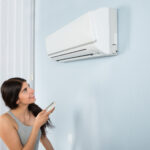Introduction
Turf burn, often referred to as “turf rash” or “turf abrasion,” is a common injury that affects athletes and active individuals who engage in sports or activities on artificial turf or natural grass. This painful condition can lead to discomfort, hinder performance, and require proper care to avoid complications. In this article, we will explore the causes, treatment, and prevention of turf burn to help athletes and enthusiasts stay in the game while minimizing the risk of this injury.
Causes
Turf burn primarily occurs when the skin rubs against abrasive surfaces such as artificial turf, natural grass, or rough playing fields. The friction generated during contact can lead to the removal of the top layer of skin, resulting in a painful and raw wound. Common causes of turf burn include:
- Sports and Physical Activities: Athletes involved in sports like soccer, football, rugby, and field hockey are at high risk due to the nature of the playing surfaces and the physical contact involved in these games.
- Sliding or Falling: Actions like sliding tackles, diving for a catch, or falling during a game can result in skin abrasions, as the body’s momentum drags the skin across the ground.
- Inadequate Protection: Insufficient or inappropriate protective gear, such as knee pads, elbow pads, or clothing, can leave areas of the body exposed to turf burn.
Treatment
Treating turf burn promptly and effectively is crucial to prevent complications and ensure a swift recovery. Here are some steps to follow when dealing with turf burn:
- Cleanse the Wound: The first step is to gently clean the affected area with mild soap and warm water. Avoid harsh scrubbing, as this can worsen the irritation.
- Disinfect: Apply an over-the-counter antibiotic ointment or cream to the wound to prevent infection.
- Cover the Wound: Protect the turf burn with a sterile bandage or dressing. Keep it clean and dry to promote healing.
- Pain Management: Over-the-counter pain relievers can help manage the discomfort associated with turf burn. Follow the recommended dosage.
- Healing Time: Turf burn wounds typically take about 7 to 10 days to heal, but this can vary depending on the severity of the abrasion.
- Seek Medical Attention: If the turf burn is deep, shows signs of infection, or doesn’t improve within a reasonable time, consult a healthcare professional.
Prevention
Preventing turf burn is preferable to dealing with the pain and inconvenience of the injury. Here are some strategies to reduce the risk of turf burn:
- Protective Gear: Wear appropriate protective gear, such as padded clothing and knee and elbow pads, to minimize skin exposure during sports and physical activities.
- Quality Playing Surfaces: When possible, choose sports facilities with well-maintained turf or grass surfaces that are less abrasive.
- Improve Technique: Learning proper techniques and body positioning in sports can reduce the likelihood of sliding or falling in a way that causes turf burn.
- Moisturize and Hydrate: Well-moisturized skin is less likely to chafe and suffer from abrasions. Drink plenty of water to keep your skin healthy.
- Regular Skin Maintenance: Take care of your skin by moisturizing and exfoliating regularly. Healthy skin is more resilient.
Conclusion
Turf burn is a painful injury that can affect athletes and active individuals participating in sports and activities on abrasive surfaces. While it can be challenging to completely eliminate the risk of turf burn, proper prevention, immediate treatment, and appropriate protective gear can significantly reduce the likelihood of this injury. By taking these precautions, you can stay active and enjoy your favorite sports without the discomfort of turf burn.



